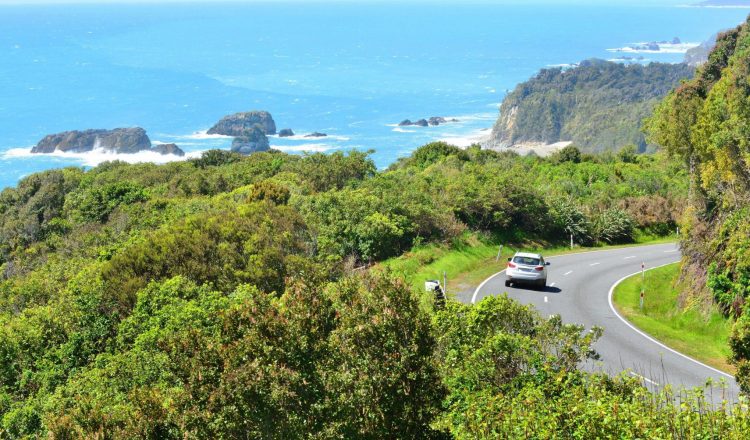겨울 운전
빙판길, 젖은길, 눈길 운전을 위한 준비 및 주의 사항에 대해 알아봅시다.
준비 사항
- 미리 여행 계획을 세워서 안전한 운전에 대비하세요.
- 출발 전에 여행 플래너 (외부 링크) 또는 전화 0800 44 44 49를 통해 교통 상황을 업데이트하세요.
- 어디로 가는지, 어떤 경로를 취해야 하는지 미리 생각해세요. 편리함보다 안전을 우선시 해주세요.
- 날씨가 좋지 않은 경우 꼭 운전을 해야하는지 다시 한 번 생각해보세요.
- 항상 일기 예보를 확인하세요.
궂은 날씨지만 운전이 불가피 한 경우에는 대신 운전 시간을 넉넉히 안배해 주세요. 시야가 좋고 도로 위에 얼음과 눈이 덜 내릴 가능성이 있는 낮에 운전을 계획하세요. 위험이 급격히 증가하는 밤에는 운전을 가급적 피하세요.
장거리 운전 시 꼭 휴식을 취하세요. 가능하면 동승자와 번갈아 운전하거나 2시간마다 정차하세요.
고산과 같이 고도가 높은 도로를 여행하는 경우 상황에 맞는 옷을 입고, 따뜻한 여분의 옷을 휴대하세요. 또한 차량에 생존키트를 준비해주세요. 차량이 주행 가능한 상태인지 확인하고 다른 경로로 우회할 경우를 대비해 차량 내 휘발유 탱크 반 이상 채워주세요.
폭설에 대비한 스노우 체인을 미리 준비하고 그 사용법과 장착 방법을 미리 확인하세요. 체인 장착 방법 에 대한 비디오입니다.
도로 위
- 평소보다 느리게 주행하세요. 빗길, 빙판길에서 통제력을 잃는 데는 단 1초 밖에 걸리지 않습니다.
- 미끄러질 수 있는 갑작스러운 제동이나 방향 전환은 피하세요.
- 부드럽게 가속하고 부드럽게 멈추세요.
- 오르막길과 가장 낮은 내리막 여행을 할 때 가장 높은 장비를 사용하십시오.
- 미끄럼 방지 제동 시스템이 없는 차량의 경우 스키드 또는 슬라이딩을 피하기 위해 브레이크 페달을 길고 단단하게 누르지 않고 짧은 빠른 버스트로 브레이크 페달을 사용하십시오.
- 미끄러운 도로에서 멈추는 데 시간이 오래 걸리기 때문에 안전한 이동 거리에서 운전하십시오.겨울철, 특히 날씨가 좋지 않은 경우 2초 규칙을 두 배로 늘리고 따라가는 차량 사이에 안전한 거리를 두십시오.
- 안개, 비 또는 눈이 내리는 경우 안전을 높이기 위해 조명을 담근 상태에서 운전하십시오.
4WD에서 내가 더 안전한가요?
4WD는 더 나은 전진 견인력을 가지며 좋은 그립력을 제공하지만 악천후에서 운전하고, 조건으로 운전하고, 위의 겨울 운전 팁을 따르는 능력은 여전히 모든 차량에 적용됩니다.
얼음과 눈은 어떨까요?
- 도로가 빨리 얼고 낮에는 얼음이 녹지 않는 높은 은행과 키가 큰 나무로 인해 그늘진 지역에서주의하십시오.
- 교량은 다른 노면보다 오래 미끄러 질 수 있으므로 교차할 때 천천히 움직입니다.
- 새벽 때 서리가 더 심하니 이에 대비하십시오.오전 6시에 서리가 내리지 않을 수도 있지만 1 ~ 2 시간 후가 될 수 있습니다.
유지 보수 차량 조심해
고속도로에 겨울철 유지 보수 차량이 있어 도로를 열어 둘 수 있습니다.이러한 차량을 발견하면 차량 뒤에 안전한 거리를 유지하고 지시를받지 않는 한 통과하지 마십시오.
겨울철 유지 보수 대원은 폐쇄가 발생하고 상황이 변함에 따라 고속도로 상황을 지속적으로 업데이트합니다.해당 지역에 대한 최신 정보와 경험이 풍부한 지식을 보유하고 있으므로 항상 지침과 조언을 따르십시오.
여행 중일 때 정보를 사용할 수 있습니까?
전국의 길가에서 전자 메시지 표지판을 사용할 수 있으며 현재 상황에 대한 운전자에게 최신 경고를 제공합니다.
도로 폐쇄, 얼음, 눈 또는 기타 관련 정보에 대해 경고 할 수 있습니다.이러한 표지판의 메시지는 원격으로 변경되며 제한이 없는 경우 비어 있습니다.
많은 라디오 방송에서는 도로 상태 게시판도 제공하므로 지역 방송국의 업데이트를 청취하십시오.
도로에 퍼지는 미끄럼 방지 재료
CMA라고 불리는 그릿과 빙빙 방지제가 일부 도로에 퍼지거나 분무되어 얼음이 많은 환경에서의 여행을 돕습니다.정상 속도로 운전할 수 있다는 보장은 아니므로 속도를 낮추십시오.
고속도로에 그릿이 있으면 가능한 한 운전하고 그 효과를 극대화하기 위해 휠 트랙이 아닌 운전하십시오.
조건으로 운전하는 것을 잊지 마십시오.얼음과 눈이 발생할 수있는 속도는 모래와 CMA가 아직 확산되지 않은 경우가 있음을 의미합니다.
항상 기억하세요
- 조건으로 운전하십시오.
- 서리가 내리고 습한 날에는 더 먼 거리를 허용하십시오.
- 모든 지연에 대비하십시오. 조건에 맞는 복장, 따뜻한 담요, 생수 및 비상급료를 차량에 넣으세요.
- 긴급 도로 폐쇄 표지판 및 장벽을 준수하십시오.
- 도로 순찰대 또는 경찰관의 지시를 따르십시오.
- 얼음이 많은 상황에서는 견인을 피하십시오.
- 도로 이용자와 같은 도로 이용자의 안전을 위해 도로 폐쇄와 규제가 제정되어 있습니다.닫힌 고속도로에서 운전하는 것은 법에 위배됩니다.폐쇄 또는 제한을 무시하기로 선택한 경우, 귀하는 자신의 책임하에 그렇게 하면 보험이 무효화될 수 있습니다.
상황이 잘못되면
- 비상시에는 111로 전화를 겁니다.
- 기계적 고장에 대해서는 고장 서비스 공급업체에 문의하십시오.
- 주 고속도로에서 현재 도로 상황을 보고하거나 확인하려는 경우
- 0800 4 고속도로로 전화하십시오 (0800 44 44 49)
- 온라인 확인 (외부 링크)
- 문제가 생기면 차량에 머물면서 도움이 도착할 때까지 모든 사람을 따뜻하게 유지하십시오.
- 사고에 연루된 경우 아무도 부상을 입지 않더라도 경찰에 알리십시오.이러한 유형의 정보는 필요한 경우 도로를 개선하는 데 도움이 됩니다.

















































